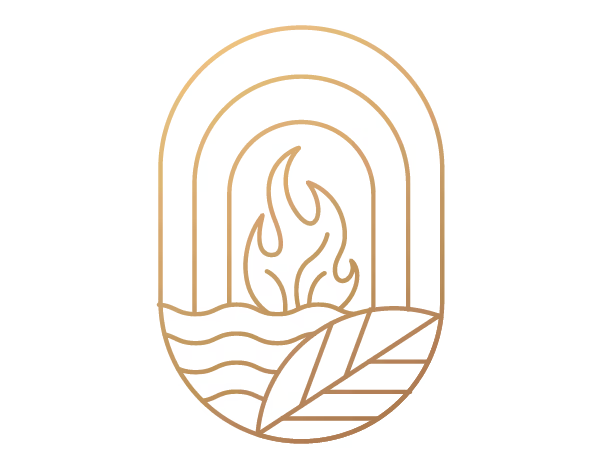Introduction
In today’s regulated extraction environments, safer and smarter hazardous location electrical installs are essential. As extraction rooms adopt larger automation loads and intricate equipment such as the Thompson Duke Press Machine (TPM), facility teams face a crucial challenge: how to install and control electrical equipment in flammable atmospheres—without the expense and operational headache of constructing the entire space to the strictest hazard classification. Enter NFPA 496 purged pressurized panels hazardous locations—a technology and code approach that unlocks flexibility, safety, and efficiency when deployed correctly.
This guide distills the 2024 iteration of NFPA 496 for extraction, distillation, and laboratory facilities using solvents and automating more processes. Here’s what you need to know to get spec, install, and operations right—while pleasing your AHJ (Authority Having Jurisdiction) and keeping your uptime high.
Why Purged/Pressurized Panels Are Gaining Ground in Extraction
Hazardous location (hazloc) panels have been a staple in petrochemical and pharmaceutical manufacturing for decades. Extraction with ethanol, hydrocarbons, or volatile processing steps brings the same risks—but the pressure to automate, boost batch size, and streamline workflows now applies to cannabis, hemp, and botanical R&D just as much.
Instead of building the entire extraction or post-processing room to Class I Division 1 (C1D1) standards—an expensive, restrictive feat—many labs and manufacturers are enclosing sensitive controls, motors, or automation hardware in UL/NFPA-listed purged/pressurized enclosures. These panels are kept free of hazardous vapors by maintaining positive pressure with clean air or inert gases (such as nitrogen). Lose pressure, and the system will trip alarms, interlock devices, or both.
NFPA 496:2024 formalizes these requirements for safety and AHJ acceptance—and recent changes have elevated the documentation and marking bar even further.
Key Requirements per NFPA 496:2024
1. Purging, Pressurization & Protective Gas
- Purge gas: Use dry, clean air or non-reactive inert gases (most commonly nitrogen).
- Pressure levels: Typical specification is 0.50 inches of water column (12.7 mm) minimum, continuously maintained.
- Purge before energizing: Before power is applied to internal equipment, use a complete purge cycle to remove any hazardous vapors.
- Continuous or static pressurization: Some processes require constant flow to compensate for enclosure leaks. Others can run with static pressure checks, especially in tightly sealed panels.
2. Leak Testing, Loss-of-Pressure Trips, and Interlocks
- Leak checks are performed during commissioning and at regular intervals (based on operational risk, typically semi-annual or annual).
- Interlocks: Power to the panel must be disconnected upon pressure/purge failure—this can tie directly into automation logic, E-stops, or safety PLCs.
- Pressure loss alarms: Systems must trigger audio/visual alarms or BACnet notifications when pressurization drops below minimum requirements.
3. Labeling & Marking (New for 2024)
- Hazard labeling: All purged and pressurized enclosures must display updated hazard signage, including asphyxiation warnings for nitrogen and operational status.
- Operating instructions: Clear, permanent directions for emergency procedures must be posted.
- Documentation: Each panel needs an as-built verification package, purge logs, interlock matrix, and event history ready for AHJ review.
4. Area Classification, Boundaries, and Mechanical Integration
- Room classification: Extraction rooms typically use C1D1 (for primary solvent use zones) and C1D2 (adjacent, lower-risk areas) per NFPA 30/NEC 500/70.
- Panel position matters: For example, the Thompson Duke Press Machine (TPM) and its controls can be arranged with their own protected panels, even if adjacent to classified spaces, provided panels meet NFPA 496 requirements.
- Mechanical tie-in: Proper integration with facility HVAC and hazardous gas detection must be coordinated. A failed purge/pressurization event may command increased exhaust and trigger full-room alarms.
5. Integration With Alarm Logic and Controls
- Alarm architecture: Modern extraction suites must align individual panel status (pressure, purge cycle, door open/tripped) across the facility’s overall alarm philosophy.
- Interlock matrix development: Mission-critical for both compliance and safe operation. Define who gets what alarm, how systems respond, and how manual resets are handled.
- For example, a lost-pressure event in a C1D1 adjacent panel should trigger instrument shutdown, send operator alerts, and activate local beacon lights—while maintaining full operational logs.
Sample Implementation Timeline & ROI Considerations
Weeks 1-2: Facility assessment—define hazardous area boundaries with the EE/MEP and AHJ feedback.
Weeks 3-4: Panel and purge system specification—determine NEMA/IP ratings (ensure gasketing for gas/vapor exclusion, even if a specific rating isn’t mandated by code).
Weeks 5-6: Alarm logic, interlock matrix, and integration wiring design. Develop work instructions for leak testing, purge cycles, and operator response.
Weeks 7-8: Panel install, commissioning with coupled alarm/interlock testing. Train operations on marking, logs, and routine checks.
ROI Metrics to Watch:
- Reduced build cost by limiting how much of the room must meet stringent C1D1 construction.
- Shorter downtime due to panel-level trips rather than full facility shutdowns.
- Scalable automation for expanding batch or process lines, e.g. scaling up cartridge press/capping operations.
- Easier AHJ approvals with complete as-built documentation and marked panels.
Best Practices and Inspection Checklist
- Confirm continuous or correctly programmed purge cycles before panel energization.
- Verify all leaks and panel seals at install; recheck every six months or as required by site SOP.
- Make sure all pressure interlocks cannot be overridden except by trained personnel.
- Inspect labeling and signage for clarity, permanence, and “asphyxiation hazard” warnings per 2024 NFPA 496.
- Keep up-to-date logs of inspection, incidents, and maintenance for AHJ review.
- Document change control: Any alteration (new cutouts for cable entries, device swap-outs) triggers a new pressure/leak test and record update.
Frequently Asked Questions
What’s the difference between NEMA and IP ratings for purged panels?
While NFPA 496 doesn’t require a specific NEMA enclosure type, robust gasketing and build quality (often matching or exceeding NEMA 4 or 4X/IP66) is essential to prevent incursion of hazardous vapors, liquids, dust, and cleaning chemicals. Higher ratings are recommended in solvent-rich environments with frequent wash-down.
What gases are permitted for enclosure purge?
Use clean air or non-reactive inert gases—most commonly nitrogen. Minimum enclosure pressure is 0.50" water column. Flow rates are set to stay just above the safe threshold and compensate for any leakage.
What documentation is needed for AHJ sign-off?
- As-built panel drawings
- Verification of enclosure build quality (seal checks, pressure decay logs)
- Alarm and interlock diagrams with response sequence
- Marking photographs
- Operator SOPs for normal and emergency condition response
Integrating With Your Extraction and Packaging Workflow
Hazardous location panels serve as the backbone for safely automating tasks like filling, weighing, and capping—especially as equipment like the Thompson Duke Press Machine (TPM) advances batch throughput. Urth & Fyre not only supplies compliant automation equipment, but also collaborates with your electrical engineering and MEP design teams. We:
- Guide panel selection and spec
- Draft interlock/alarm matrices, integrating status, alarms, and shutdown into your safety system
- Support commissioning documentation and on-site inspection, streamlining AHJ sign-off
- Help implement robust change control and SOPs for ongoing compliance
Next Steps: Coordinate Your Upgrade With Confidence
Upgrading your electrical infrastructure with NFPA 496 purged/pressurized panels is one of the most cost-efficient ways to layer safety and flexibility into your automation strategy—without endless build delays or over-engineering your facility envelope. Ready to consult on your layout, upgrade path, or audit? Connect with the Urth & Fyre team for expert product recommendations, project consulting, and listings for everything from capping presses to precision environmental controls.
Explore full product and service options at urthandfyre.com.



